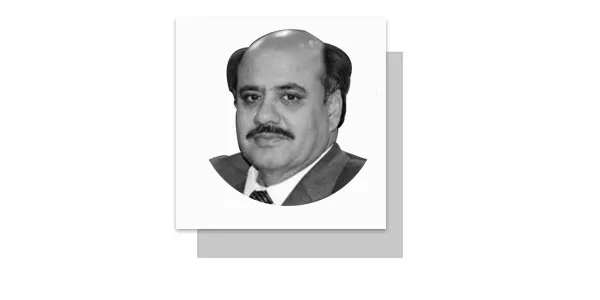IRAN’S nuclear posture has steadily transformed since the United States’ exit from the Joint Comprehensive Plan of Action (JCPOA) in 2018. Tehran has espoused a balanced nuclear posture, which ensures the continuity of nuclear research and development without compromising its membership in the Nuclear Non-Proliferation Treaty (NPT). The International Atomic Energy Agency (IAEA) is monitoring and inspecting Iranian nuclear facilities to ensure Iran’s compliance with the NPT. Despite Tehran’s compliance with the NPT norms and regulations and the frequent inspections of the IAEA, the echo of Iran’s latent nuclear weapons potential is alarming for nuclear non-proliferationists. Iran and the P5+1 countries, China, France, Russia, the United Kingdom, the United States, Germany and the European Union, signed the JCPOA, also known as the Iran nuclear deal, on July 14, 2015. The Agreement aimed to ensure that Iran’s nuclear program remains peaceful and the country refrain from developing nuclear weapons. The deal was endorsed by United Nations Security Council Resolution 2231, affirming that Iran was not developing nuclear weapons and would refrain from activities that germinate an impression that it was harbouring ambitions for pursuing nuclear weapons.
The JCPOA provisions were designed to cap and roll back Iran’s uranium enrichment program. For instance, the agreement provisions aimed to cap Iran’s uranium enrichment, stockpile reduction, Fordow facility transparency and augmenting IAEA inspection and monitoring processes. In reciprocity, Iran received sanctions relief. Consequently, Tehran limited its uranium enrichment capacity by reducing its number of centrifuges and kept the level of enrichment to 3.67%. It also agreed to reduce its stockpile of enriched uranium by 98% to a maximum of 300 kilograms for 15 years. Indeed, it was a realistic agreement to cap and limit Iran’s uranium enrichment capacity, which is significantly below the enrichment level required for weapons-grade uranium, i.e., 93% uranium enrichment. Besides, the JCPOA discourages the other regional nukes’ aspirations.
Trump administration thwarted JCPOA, despite the IAEA’s rigorous monitoring and inspection grounded reports that Iran was fulfilling its obligations under the deal and NPT. Hence, there was no evidence of diversion of nuclear material for military purposes. Iran’s apparent compliance with JCPOA was not enough to change the mindset of President Donald Trump, who was a strong critic of the JCPOA and often referred to it as a “bad deal.” He was anxious due to the steady development of Iran’s ballistic missile program and its increasing regional activities. On May 8, 2018, the United States unilaterally withdrew from the JCPOA despite the opposition from other signatories and reinstated sanctions on Iran. The scuttling of JCPOA heightens Iran’s security dilemma, which has necessitated Tehran to revisit its nuclear posture to deter Israel and the United States’ aggression and nuclear blackmail. The Agreement represented a pivotal opportunity for the international community to invigorate negotiations for a nuclear weapons-free Zone in the Middle East. However, the Trump administration’s stubborn stance and the U.S. withdrawal from the JCPOA have increased the chances of horizontal proliferation in the region. Iran has refurbished its uranium enrichment policy. According to the IAEA assessment, Iran has opted uranium enriched to approximately 60% purity, a level close to the threshold of about 93% considered weapons-grade. Moreover, western states claim that Iran is engaged in the production of uranium metal.
The controversy over Iran’s nuclear program’s drive has stiffened after the noncompliance of Tehran with the demands of the June 2024 IAEA board resolution. The IAEA suspects the presence of undeclared nuclear material and activities at four sites – Lavisan-Shian, Varamin, Marivan and Turquz-Abad. Iran needs to permit and arrange for the Agency inspector to visit the sites to refute the IAEA’s claim. Being a member of the NPT, Iran’s entire nuclear activities ought to be under the IAEA safeguards. On August 29, 2024, the IAEA reiterated, “The outstanding safeguards issues stem from Iran’s obligations under its NPT Safeguards Agreement and need to be resolved for the Agency to be able to assure that Iran’s nuclear [program] is entirely peaceful.” To support the IAEA demand; France, Germany and the U.K. urged Iran to refrain from producing nuclear weapons.
Tehran refuted the recent charges of the IAEA. On September 6, 2024, Mohammad Eslami, Head of the Atomic Energy Organization of Iran (AEOI), said, “For over two decades, the nuclear case has been unjustly targeted against Iran. The arrogant system and the Zionists falsely claim a secret, undeclared nuclear program, utilizing this fabrication to pressure Iran’s Atomic Energy Agency.” He added, “The IAEA’s responsibility is to investigate nuclear activity worldwide, but its arrangement is orchestrated by the arrogant system.” Eslami’s rebuff testifies that Iran has not decided to develop a nuclear bomb. However, the increasing tension between Tehran and Tel Aviv and the increasing pressure from the IAEA could frustrate Iran to exit NPT and develop nuclear weapons. To conclude, Iran’s post-JCPOA nuclear advancements signal that it continues its nuclear program modernization without formally leaving the NPT. However, the escalating tension with the nuclear-armed Israel underscores that Tehran could develop nuclear weapons to solidify its defensive fence.
—The writer is Prof at the School of Politics and International Relations, Quaid-i-Azam University.
(jaspal_99@hotmail.com)










